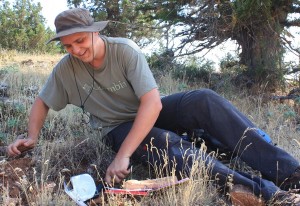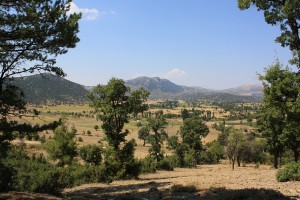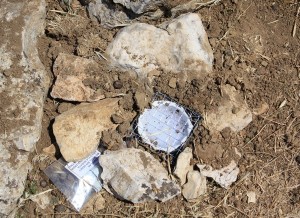This year the palynological survey took place August 1-14. The aim was to collect additional data with which a detailed palaeoenvironmental reconstruction can be made for the period from the end of the so-called Beyshehir Occupation Phase (BO Phase), which lasted from approximately 2,230 to 1,550 years before the present until the present day. Other than that, this year’s survey also served as an opportunity to gather additional present-day pollen rain data for use in climatological reconstructions.
Previous studies have revealed a strong human impact on the vegetation in SW-Turkey during the BO Phase, however, little was known about the changes in vegetation patterns after this phase and after the demise of the city of Sagalassos. During last year’s campaign, a number of soil cores were collected from various parts of the territory that were known to contain good sediments and some very nice results have been obtained during the past year. This year the main focus was on collecting data about the modern pollenrain. This data will serve as the basis of reconstructions of the historical landscape openness and vegetation as well as for use in climate modeling.
The modern pollen rain was recorded in two ways. Firstly a large number of moss polsters were collected. A moss polster is a sample of the green parts of the mosses that grow on stones and tree trunks. These mosses act as a sponge, catching and preserving pollen that originates from the area around the polster. Secondly a number of pollen traps were placed in the region. Such traps stay in situ for the period of one year, collecting the pollen that blow into them from the surrounding landscape. If enough data is collected from as many different surroundings as possible, a relation between the vegetation and the pollen production can be estimated, helping us reconstruct the past landscape.
During these two weeks, the palynological survey joined the geological and geophysical survey teams to the marsh of Gravgaz and the basins of Bereket and çanaklı. At these locations, moss polsters were collected and pollen traps were deposited in as many different (combinations of) vegetation types as possible.
Apart from sampling the modern pollen rain, two additional soil cores were drilled in the Bereket basin, on a location where it was suspected that the sediments deposited after the BO Phase were superior to earlier cores from the basin in terms of both pollen preservation as well as depth. Indeed all expectations were more than met. When determining the lithology of the sediments with the aid of Prof. Phillipe Muchez, it turned out that the core contained nearly 7 meters of sediments deposited after the end of the BO Phase (until now, 3 meters or less was normal) and this material consited mostly of peat or peaty clays, containing many well preserved and large subfossil plant remains and indicating very good pollen preservation.




